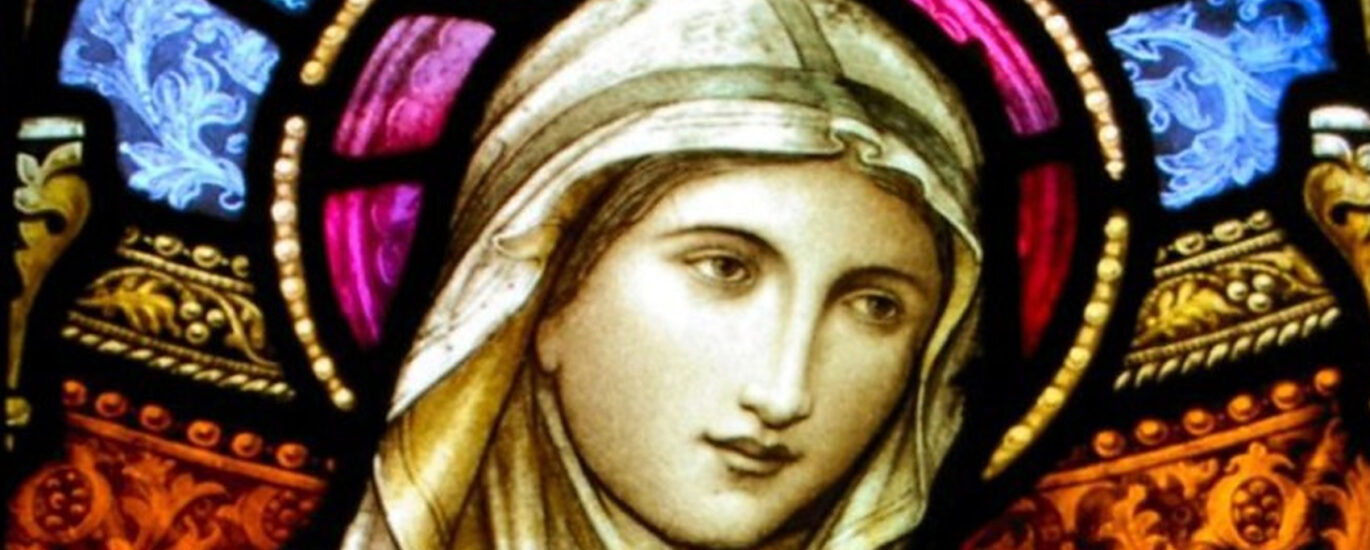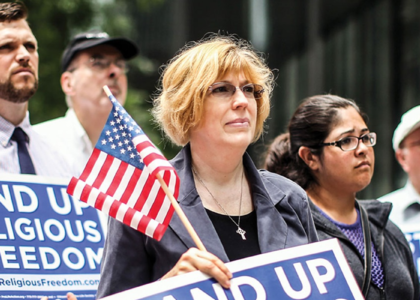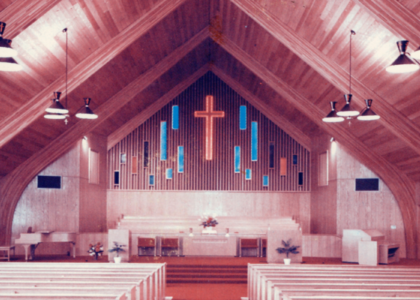In 1987, Congress passed a resolution designating March as Women’s History Month, a month dedicated the recognition of the specific achievements of women and how we’ve shaped the course of American history. And, not only is March Women’s History Month, here in the US March is also Irish-American Heritage Month. There have been so many incredible Irish-American women who contributed to our country and our world, so on today’s episode we celebrate them with two gracious guests who share stories about Ireland’s patroness saint and the experiences of Irish women.
Ariana Baltay who shares her research and insight into Ireland’s patroness saint, Brigid of Kildare.
Maureen Hernon, a teacher, restauranteur, and writer who tells us about her life growing up in rural Ireland
Our Guests
Ariana Baltay
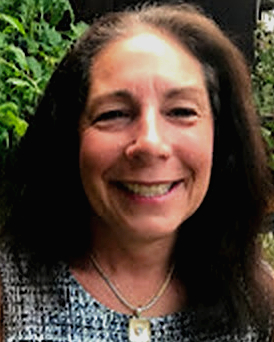
Ariana Baltay (she/her) is a teacher, a mom, and a recent Stanford MLA (Masters of Liberal Arts) grad. She loves painting, traveling and swimming with the PCC Masters team.
Maureen Hernon
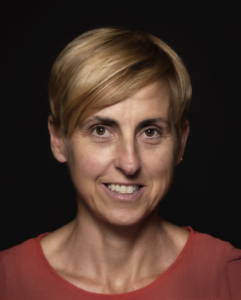
Maureen Hernon (she/her) is a food coach, a teacher, a restauranteur and writer. She loves the outdoors, good food and exploring new places with her family.
PART ONE.
Ariana Baltay
In the early ‘60s my father called my mother a “one-handed woman” when she did two things at once. It was an era when more women were returning to work, but society still expected them to run the household. My father believed that men cleverly chose to work with both hands. He missed that when women did not it was likely because they had their hands full with a baby on one knee and a tool in the other. My dad was a good man, but he claimed that I never wore diapers, thought it was funny, and didn’t mind revealing that he had never changed one. My mother magically presented me clean each time he saw me. Sometimes women’s work is as miraculous as St. Brigid’s superhuman miracles. St. Brigid, a fifth century Irish saint who performed feats of healing and protection, is still adored for her compelling strength and leadership at the inception of Catholicism in Ireland. Irish women found much needed inspiration in her stories and have kept them alive to this day despite constant patriarchal attacks.
St. Brigid offers safety and preservation of life for all the Irish, but she specifically protects women, and magically prevails over birth, the hearth, and female health. She vindicates women’s experiences as central and important and models the role of a powerful female leader. In writing this small contribution to Amy’s amazing podcast series I thought a lot about women who are constantly juggling a long list of responsibilities. I personally was holding down a full-time teaching job while dealing with the ongoing needs of grown kids. It wasn’t lost on me that despite our family’s shared meal responsibilities, I was the one who felt additionally obliged to make the homemade dessert before visiting friends. We still need to work miracles! Fortunately, St. Brigid and her sacred feminine traditions have empowered me more than I would have dreamed. She points to women’s power as a birthright. She is a role model whose might overpowers patriarchy, and her traditions go on to rise and speak for women today.
More about Saint Brigid’s Powerful Reign
When I began writing my thesis on St. Brigid at Stanford last year, I was amazed at the extent to which the saint’s life and stories connected the holy to the feminine. The word ‘feminine’ carries a lot of baggage. It connotes softness, hesitancy, and weakness. But St. Brigid demonstrates another kind of “feminine,” one that is commanding, gutsy, and cunning. The saint is remarkable because she exists, and even thrives, within the male-dominated church. She is a beloved spiritual teacher and Ireland’s only female patron saint. She does all this without losing her association with the original ancient goddess. She’s the omni-feminine, so powerful that she orchestrates the beginnings and ends of life, and provides constant protection from evil. If we approach St. Brigid with an understanding that she represents a merging of the Christian saint with Ireland’s pagan Celtic goddess, it’s easy to understand why she is larger than life. Her strength comes from a time in Ireland when people venerated female creational power. Today the saint’s festival day is celebrated on the same day as a pagan Spring celebration, Imbolc, but her traditions reveal her influence over all aspects of the life cycle.
The St. Brigid we know today evolved under patriarchy and emerged as a Catholic saint. The Irish loved her pagan roots enough to preserve them within Christianity. Her knowledge of this Celtic past complimented her essential work to help Christianity blossom in Ireland. St. Brigid was a real woman whose power in the church flies in the face of patriarchal tradition. She wielded the power of a Bishop as she helped form Irish Catholicism and direct the nascent Catholic Church. Her pagan background gave her the influence she needed to establish the fundamentals of monastic practice. Her Lives, the medieval stories of her life written for religious imitation, do sometimes describe her in meek and humble terms: “She was abstinent, she was innocent, she was prayerful, she was patient” it says in The Book of Lismore: The Life of Bridget. But clearly this is not the whole story about Bridget.
St. Brigid and her sacred feminine traditions have empowered me more than I would have dreamed. She points to women’s power as a birthright. She is a role model whose might overpowers patriarchy, and her traditions go on to rise and speak for women today.
In her Christian stories, St. Brigid models exceptional virtue, but also exceptional strength in a world where many female Christian figures lack her authority. She is virginal but she is also commanding: according to legend she plucks out her own eye to escape a marriage arranged by her father. St. Brigid fights with superhuman strength for the rights of those she wants to help, and she punishes those who get in her way. When a merchant lies to her about his cargo, she turns his salt into rock. When a person washes a leper and cures him but the cured man won’t return the favor, St. Brigid revokes his cure and brings back his leprosy. And a king who rejects her choice of official appointment is killed when she makes him fall from his chariot. Compared to divine females in the Bible, St. Bridget is resilient and retains more clout. In Exodus and 2 Kings, where women venerate the goddess Asherah, an Assyrian consort of El, and the wife of the Hebrew god, Yahweh, the patriarchal kings lash out and violently destroy the goddess’s altars. By contrast, St. Brigid resists this kind of patriarchal oppression and keeps her female sacred power within Christianity.
Perhaps St. Brigid keeps her power under patriarchy because of the strength she drew from her pagan leadership and education. Before she converted to Christianity at about 18 years of age, and before she founded her double monastery at Kildare, she was trained as a Druid, the leading class of the indigenous Irish Celts. As a Druid with a high-ranking Druidic father, St. Brigid would have received twelve years of education to prepare her for Druidic leadership, and would have learned to wield power in a uniquely feminine way. Druids functioned as the Celtic priests and served as teachers, judges, lawyers, prophets, and political advisors to local kings. Women in Druidic society could rise to high-ranking positions, and hold leadership roles equal or greater to men. As a young priestess, St. Brigid led rituals to celebrate her namesake, the Celtic Goddess Brighid, at the pagan shrine of Cill Dara, or “the church of the oak.” After her conversion to Christianity, St. Brigid and her nuns tended the sacred fire at the same site which became her Kildare Monastery. St. Brigid used her education and leadership to inspire both men and women to join the fifth century Irish church where her qualifications would have allowed her to resist patriarchal domination and rise to the highest rank within the Irish Catholic Church.
As a child I can remember searching for female religious figures to emulate. My situation was a tad unusual since my mother’s efforts to get me to Methodist Sunday school were counterbalanced an hour later by a thorough deprogramming from my Zionist atheistic father. Needless to say, I did not adopt a fixed set of religious beliefs. Searching throughout my young adult life for something that resonated with my fledgling feminism, I knew I wasn’t alone in wondering why the most prominent figures in the church were male, while the females were virginally pure, humble, and served men’s interests. The absence of powerful central female figures in the religious hierarchy and scripture puzzled me. I kept searching for a belief system that looked and thought like me despite the largely patriarchal guise of religion today. While I can’t say St. Brigid has made me religious, she certainly has altered my perspective on Christianity.
…I knew I wasn’t alone in wondering why the most prominent figures in the church were male, while the females were virginally pure, humble, and served men’s interests
In my research on St. Brigid, I directly connect the saint’s traditions to a female-dominated sacred past stretching back to the paleolithic. I was excited to discover that, tens of thousands of years ago, cave people buried remains at the mouth of the cave, and never deep within. This physical cave entrance, I realized, may have represented the point of transition that represents the birth place where death changes to life. I knew that this was the same way figures of St. Brigid near holy wells or over the door of a modern day church, mark a magical entrance to the other world where the saint’s power can be accessed. Like a cave, the interior of a church is understood as a womb, a sacred, mysterious place where life originates and death returns. I have amended my view on today’s church despite its continued male dominance, because St. Brigid’s traditions have roots in the earliest beliefs in the world which venerated the feminine. The saint’s traditions and stories vindicate women’s claim to a central position within modern day religion. Like the child in school who needs to recognize themself in the characters they read about, I needed to see women of power reflected in scripture. Finding the sacred feminine through St. Brigid has given me this sense of belonging.

I made another linguistic discovery that also spurred me on in my hunt for St. Brigid’s connection to an ancient, female-centered religious past. Although patriarchal leaders tried to erase sacred feminine veneration from history, words and metaphors within the Irish language had preserved the idea of female divine control. Language surrounding St. Brigid’s traditions records her power surrounding birth. She travels the Irish countryside each Spring, blessing crosses and reeds on her festival day, which takes place on Imbolc, meaning great belly or womb. Birth terms, such as St. Brigid’s bowl for the womb, also offer evidence that St. Brigid controls the life cycle and retains the power of creation from the original mother goddess. St. Brigid is also the patron saint of childbirth and it was traditional for the midwife to stand in a doorway and call for St. Brigid by name at the moment of birth. The saint’s protection at doorways represents her control over liminal borders where the saint can access the magic of the otherworld. Legend also says St. Brigid cried the first keen, a blood curdling mourning wail fit to wake the dead. St. Brigid’s spring blessings are powerful and not just about fertility. They preserve life for another year, and can save someone from drowning or fire.
As I thought more deeply about St. Brigid’s festival day blessings, I was astonished to realize that she participated in one of the oldest female-centered sacred rituals: the sacred marriage. In this ritual, a priestess on earth models behavior for the goddess she venerates in have. This Christian icon’s annual journey around Ireland exemplified the pursuit of an ancient belief. For thousands of years people believed that they needed to act in order to enable the gods to make crops grow and make the sun and seasons turn. In sacred marriage, a priestess chooses her king and mates with him to energize the life cycle. Their union mirrors the marriage of the goddess and god above, and works to prompt a continuation of the life cycle, including the movement of the sun, and the growth of crops. St. Brigid also represented her namesake, the Goddess Brighid, in the same way. When she venerated Goddess Brighid, and kept the sacred flame burning, it caused the goddess to preserve life by moving the sun, thus keeping the crops growing. When St. Brigid does her festival rounds on the eve of her festival day to visit and bless each home, she models the movement of the sun on the first day of spring when life resurfaces. In this way she participates in the ancient sacred marriage ritual practiced in ancient societies like Egypt, Assyria, and Sumer. Even in her Catholic form, her seasonal rounds link St. Brigid to the ancient rituals of the mother goddess that ensures the continuation of the cycle of birth, death, and regeneration.
My research revealed a direct connection between St. Brigid and Paleolithic religious expression as well. One of the oldest examples of figurative art, now called the Venus of Hohle Fels, is a 40,000-year-old female figure with exaggerated breasts and vulva. While many researchers have interpreted the statues’ voluptuous characteristics as symbols of fertility, sexuality, beauty, and motherhood, their restricted view narrows our understanding of the symbols’ creational metaphor. If we remove this patriarchal filter, we understand that these figures represent the ultimate power of the female over all life, to create and also take it back again. We can trace a line from the Hohle Fels Venus to another 8,000-year-old naked figurine found at Catal Huyuk, a site in modern Turkey. This Lion Lady sits on a chair with lions for armrests resembling King Solomon’s throne. She was not a pawn in a simple fertility ritual, nor a sex symbol, as some archeologists have claimed. Rather, Asherah and other female goddesses in sculptural representations frequently stand on lions to demonstrate female power. We can make a direct connection from the Judeo-Christian tradition of St. Brigid back to the great female creator goddess of the paleolithic. Thousands of years ago, as agriculture took hold, patriarchal Indo-Europeans began to invade nature-based societies, causing a splintering of the all-powerful Great Mother Goddess. Remaining goddesses became a pantheon of lesser female divinities under these masculinizing forces. We might refer to these new goddesses as the goddess of war, or the goddess of weaving. These namesake attributes, however, originally belonged to the same ancient feminine divinity.
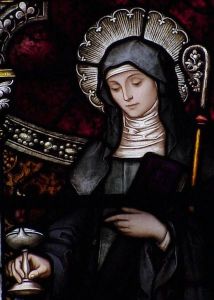
Another reason I personally have loved learning about St. Brigid is that she is a seamstress like me. I sewed my own wedding dress, enjoy costuming shows, and have taught embroidery classes, but somehow, during visits to my husband’s family of scientists, I always felt that this women’s’ work was second rate, and certainly not something to be proud of in conversations. Finding out the ancient significance of weaving through St. Brigid made my heart soar and feel larger than life, as if I belonged to a long-standing club of wise women. Although weaving is not highly esteemed in today’s world, St. Brigid’s stories remind us that needlework is one of the oldest symbols for female creational power. Legend says that mighty St. Brigid wove the first cloth in Ireland. Even as patriarchal pressures reduced the sacred value once placed on women’s arts, language preserved a linkage between life and weaving so fundamental that the words for ‘spin’ and ‘lifespan’ have the same origin. The verb to spin originally meant to draw out, or stretch long. St. Brigid’s first miracle in Lives also involves stretching fabric. In her miracle of the cloak, she cleverly negotiates with the king for all the lands her cloak will cover so that she can build her new monastery. When he agrees, she stretches her cloak across the land in four directions to possess all of the Liffey plain, the sacred Druidic fields. We can understand her cloak of woven fabric as a symbol of sacred creational power. Statues of Aphrodite and Asherah also depict a spindle to represent the goddess’s divine strength. St. Brigid’s woven reed cross also represents her power in Ireland today. This dates to the Paleolithic when people also built ritual items out of clay molded over woven reeds. Irish folk culture used weaving as a symbol for the creation of life until the modern era. The Irish Cultural Commission interviewed Irish people in the mid 1900s who said that St. Brigid imbued her fabric with her strength, and each strand of white thread she wove had healing powers. This belief extends to sacred sites for St. Brigid all over Ireland where even today pilgrims cover a bush with small ribbons in hope of earning her healing blessing.
This February, I plan to attend the St. Brigid’s Day festivities in Ireland. I wondered if I should visit only Christian St. Brigid sites, such as her holy wells. But I soon realized that Ireland’s megalithic passage tombs were equally significant. Ireland’s prehistoric monuments also reflect sacred feminine magnificence. Irish place names for these stone structures reflect a deeply ingrained consciousness of an earthly mother goddess. In County Meath, Ireland, three mounds known as “The Witches Hops” were previously known as The Calleagh Steppes.” Cailleach’s name means ‘witch’ or ‘hag’. The story of Callieach of Loughcrew contains remnants of an ancient creation myth and Callieach was likely a goddess of the earth venerated in ancient times. In Irish folklore, Cailleach is a superhuman woman who could harvest a field faster than any man. True to Irish tradition, she also took many forms, including a crone, a banshee announcing death, or a Christian nun. Today a hag is a witch or an ugly old woman, an insulting name at best. Maybe we are just lucky that St. Brigid’s wells are calm and peaceful places for reflection and healing. Some still regard them as portals to the otherworld, a magical place from which feminine creators draw and vanquish life as they control the cycle of birth, death, and regeneration. I find solace in the truth about female power and enjoy the fact that people have been telling this story for tens of thousands of years. St. Brigid lived a powerful life of superhuman dimension. She reminds all of us that the original female religious authority was appropriated under patriarchy and that, in our work to break down patriarchy, we are restoring women to their rightful place in history.
PART TWO.
Maureen Hernon
Early Childhood in the 70s
I was raised on a farm in rural Ireland with two brothers. My parents had traditional roles, as did our neighbors and our extended family. My father was a man that encouraged and expected my two brothers and I to chip in and get involved in many daily activities. Jobs were shared, for the most part, as equal as what was physically able. We all got to experience getting up at six in the morning to pull fresh veg for the market. We all got to experience staying up late into the early hours of the morning to supervise the birth of a new animal, and we certainly got pulled out on a Saturday morning to bring cattle in for testing, or to collect eggs, or to feed the animals, etc. The three of us were seen as equal, and he made it as much fun as possible along the way. But when it came to a lot of inside jobs, I think my mom swayed differently. I was the one asked to vacuum, and I was the one asked to set the table. The tea had to be ready for my dad at a certain time every day due to his work, and I was the one to be asked to do that rather than the boys. When the priest came to visit many Saturday nights, the best China would be put on the table, and again I was asked to prepare it. I think for the most part it didn’t really upset me or cross my mind even that it should be any other way.
My elementary or primary school experience was such that the boys and the girls were in two separate schools after first grade. The girls’ school, which was run by nuns, ensured that we all did sewing, and singing, and dancing, art, outside the core curriculum. Whereas the boys were encouraged to partake in quizzes and sport and local history and geography. I think I would really have liked that as well, but my childhood education certainly was clearly gender-based. The environment again, at this time, was a traditional family and community focused one with traditional role models.
Later Childhood through the 80s
My secondary or high school experience was a welcome change. It was a mixed school, and while there were limitations to the subject choice, we were encouraged to do whatever took our interest at whatever level. Both girls and boys were able to play football, run the school bank, take tech drawing. It was an open environment that allowed all students to have equal opportunity. It was a time when there was a huge growth in kids going off to college. However, many boys had to stay at home to take over the farm. While farming was also going through a transition and becoming more streamlined and business-run rather than lifestyle-focused, it was still the son that would take on the job. Many girls chose nursing and teaching, as these careers coupled better with family life. I remember my mom suggesting that I opt for a secretarial course or a local office job as it would be a lot easier, and why would I, to quote, “kill myself” at college. Her intentions I’m sure were all good but strongly colored, I think, by her own experiences, and perhaps her fear for me and the unknown ahead. Maybe she was hoping that I would meet the man that would take care of my financial needs.
When the priest came to visit many Saturday nights, the best China would be put on the table, and again I was asked to prepare it. I think for the most part it didn’t really upset me or cross my mind even that it should be any other way...
Young Adulthood in the 90s
College for me was not your typical experience. I attended an affiliated college to Trinity College Dublin run by Dominican nuns. This Roman Catholic order ran a strict archaic school where first-year live-in students had to carry out daily duties at 6:30 in the morning each morning before class, like polishing wooden staircases. Many traditions and duties and responsibilities were expected of subsequent years. One example comes to mind: every Christmas there was a formal dinner where the freshman did the wash up, the sophomores prepared and cooked, the juniors served, and the seniors got to sit and eat and mingle with the professors. My 21st birthday happened to fall on this night one year, and while I requested to be excused later into the evening with a few friends, this was not acceptable. I was told that this was a tradition that should not be broken. Guess what we did?
So there was one singular boy, I think, in the complete four years that I attended who was in class. We had the full spectrum of outlooks and philosophies though there and some teachings that were very traditional and some not so. One professor in particular, who had writings banned in a few universities, was inspirational, and he questioned everything. He lectured in theology, and while he had very deep and huge questions posed, he always made light of the lectures as well. I loved it, and it colored my outlook on religion from then on. It aroused my curiosity and certainly caused a paradigm shift from my previous experiences. I remember when he questioned the gender of God in Catholicism, and the possibility of the persona merely as something tangible to believe in and to pray to. Another lecture was questioning the existence of Mary, the mother of God. I do remember him asking that these debates and discussions remain within the lecture hall. Structure and the male dominance in religions were examined and discussed continuously. I don’t think that too much of this was happening in Ireland at the time, but it was about to change.
I remember my mom suggesting that I opt for a secretarial course or a local office job as it would be a lot easier, and why would I, to quote, “kill myself” at college…
My first employer was a very patriarchal education institution in Ireland. I got a tour of the college I worked at on arrival, and was shown the male and the female staff rooms, separate. I honestly thought that the vice principal was joking, but to my shock he was not. He agreed that it was archaic, but I’m afraid it took a few years before it changed.
I was luckily in a separate department with a young, energetic staff. I remember having to fight at staff meetings for equal opportunity in funding, equipment, hours, and space. Some of this was seniority and gender-based, more of it was preference for more trendy subjects and the market demand. We had a very authoritative principle who every new academic year would give an opening speech to staff with strong, threatening tones on work ethic and timekeeping. It seemed crazy to me, sort of funny really, but quite intimidating. During this time, I decided to purchase a house as an investment having started work, and an uncle of mine kindly offered to give some advice. Again to my surprise, he suggested that I consider a number of extremely small and old dwellings, like factory houses really, as they would be nice and easy for me rather than look at newer and bigger developments. Was he nervous for me, or was he just exerting his authority on the matter? I’m not sure.
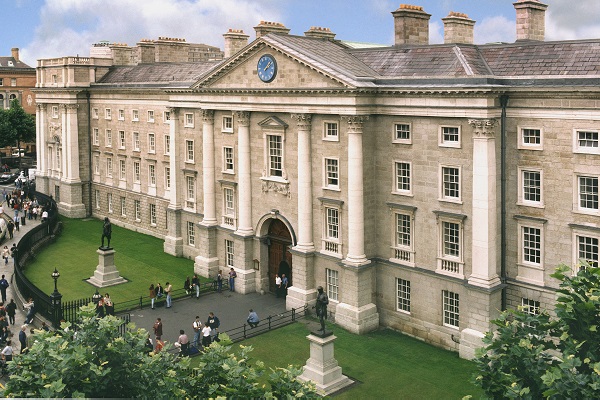
Married Life and Parenthood through the 2000s
My husband and I found it relatively easy to make decisions regarding family, work, and lifestyle together in our relationship. Our values align for the most part. I’ve stayed at home while our children have been raised, and I (or we) felt strongly on the value of the family unit, our relationships, and their growth in becoming confident individuals within the home, firstly, and then beyond. While there have been many difficult days for me personally to stay at home, I still came to the same conclusion in that it was the best option for me and us. It wasn’t an expectation from anyone else, nor was it something that was looked upon as an opt-out either. I viewed it as a privilege as many didn’t have that option and had to work. My husband’s work was far more financially beneficial, and therefore provided opportunities for all of us. So, I set aside my work and I took on the family role. I felt that in family life it is a constant give and take for things to work and tweaking the ever-changing demands.
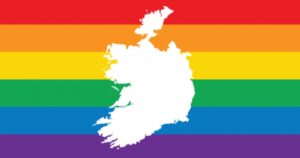
I balanced my life and the need for mental stimulation by setting up a consultancy business on health and nutrition, and it really felt great. At this time, I had many options but continued to choose being at home. The strong maternal urge to be there steered my course. Was this urge conditioning from my upbringing, or was it nature itself? We immigrated to the US while our children were midway through schooling, and once again I felt the need to be there for them and helped them get established in a different society and culture. My youngest child, using the pronouns they/them, also had to overcome a lot of hardship in the past two to three years with anxiety and depression and gender identity. I believe the safe haven of the home can only have been a solid base for them to work through it all. It has been an amazing growth experience for all the family, and a bonding that goes beyond expectations.
Interestingly, in a visit to Ireland this summer, we were amazed to have such an open and accepting experience for our trans child. It was uplifting to feel the support, even in a place that still largely abides by traditional gender roles. Maybe we don’t need to label so much in life, and maybe things have become too binary. I think that perhaps due to Ireland’s struggles and hardships in the past, people looked out for each other, and this has penetrated through to today’s Ireland. One’s color or religion or gender might not be such an issue or concern to others. There is a deeper appreciation, I think, of individual freedom. I also think that the Irish sense of humor, which pretty much is a survival mechanism, has helped build this understanding and acceptance of differences for sure.
Here in the US, as I got to know many parents in the community, I found that many women choose to stay at home, be it an expectation or a choice, and many are in the workforce. Silicon Valley is a fast-paced, work-orientated place, and the pressure that many are under to meet all the expectations and survive here is challenging. Excellence in everything certainly has a price. I do believe that this complex dilemma is due to our cultural and religious and education and life experiences we’ve soaked up thus far. We are so busy driving every aspect to the next level that we don’t allow breathing space to reassess. I mention this because I question if the roles today that many women have carry such high demands that it is destructive to the many parts of her being.
Is it her own self or outside pressures that expects such exhausting standards on work, family, image, social participation, etc…?
Who has created these standards?
Are we trying to prove something?
It is extremely difficult to prioritize the many roles women have today. Perhaps if the stay-at home mom and the job entailed was to be a full paid job that maybe society would value this differently, and there’d be a shift. I wonder.
Maybe we don’t need to label so much in life, and maybe things have become too binary.
Also, I believe that we label far too much. If I choose to work and advance my career outside the home, or if I’m non-binary, or if I play a professional sport, I should have the right and be fairly treated to do so. I feel that society has become extremely secular also, and this together with the labeling has created many unnecessary boundaries for women.
I remember my mother-in-law sharing a story that she had the privilege of being the first person to be told by a young neighbor that he was gay. This was a 70-year-old woman in the west of Ireland in the 1970s. She cried with joy and hugged him tight when she got the news. It is pretty spectacular, and it was such a wonderful thing to think that she had such an open heart, and he knew who to share his story with in a very small rural community. To her, he was who he always was—her neighbor. She was there for him and genuinely happy for him.
Are we now trying to put people in boxes for our own peace of mind and simplicity, rather than accepting differences and complexities?
Are we doing so because we are within ourselves deeply unhappy? Or has patriarchy been the root cause of this?
Has the tight hold of the patriarch, subtle or otherwise, pushed us into a constant fighting effort to find fairness, equality, and freedom?
Perhaps.
To finish up today, I do feel fortunate. I acknowledge the many subtle yet influential experiences of patriarchy throughout my life that have both colored and shaped my values and whole-being. Family life and my role as a mother to nurture and care is high up on my value system, and I see it as a partnership with my husband, who plays a similar yet different role. I also value individualism, one’s own interests and talents, and believe that everybody should follow this. Again, perhaps it has been the mix of encouragement and a few knocks that have helped me formulate who I am, and the balance that I strive towards with the multitude of roles. I remain hopeful and optimistic for the future. Thank you.
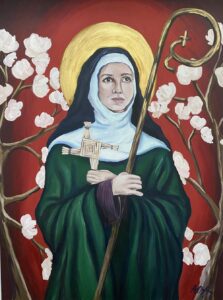
Listen to the Episode
&
Share your Comments with us below!

